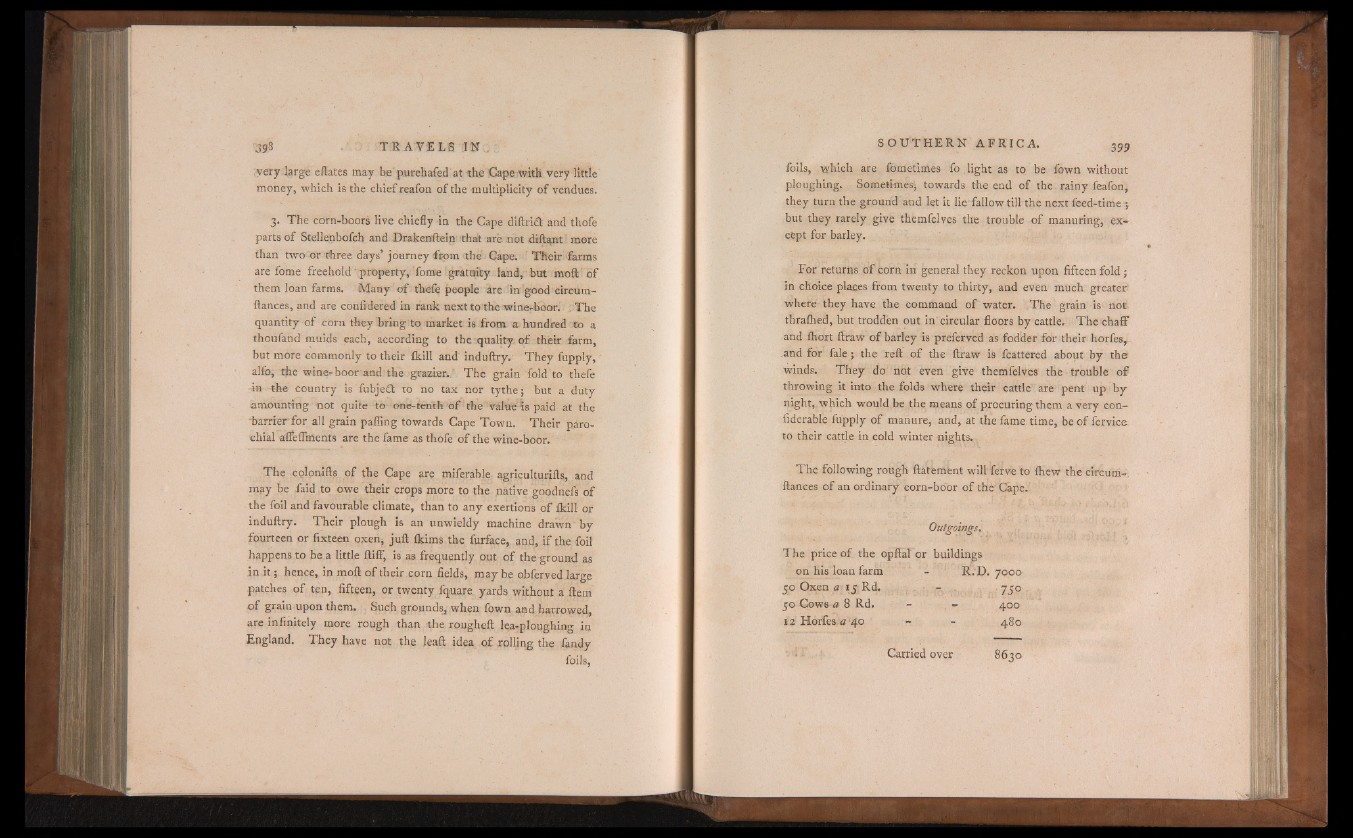
very large eftates may be’purchased at the Cape with very little
money, which is the chief reafon of the multiplicity of vendues.
3. The corn-boors live chiefly in the Cape diftrid and thofe
parts of Stellenbofch and Drakenfteip that are not diftant more
than two or three days’ journey from the Cape. Their farms
are fome freehold property, To roe gratuity land, but moft'of
them loan farms. Many of thefe people are in good circum-
ftances, and are confidered in rank next to the wine-boor. ; The
quantity of corn they bring to market is from a hundred to a
thoufahd muids each, according to the quality of their farm,
but more commonly to their ikill and induftry. They fupply,
alio, the wine-boor and the grazier. The grain fold to thefe
4» the country is fubjeit to no tax nor tythe; but a duty
amounting not quite to one-tenth of the value is paid at the
harrierfor all grain paffing towards Cape Town. Their parochial
affeffments are the fame as thofe of the wine-boor.
The colonifts of the Cape are miferable agriculturifts, and
may be faid to owe their crops more to the native goodnefs of
the foil and favourable climate, than to any exertions of ikill or
induftry. Their plough is an unwieldy machine drawn by
fourteen or fixteen oxen, juft ikims the furface, and, if the foil
happens to be a little ftiff, is as frequently out of the ground as
in i t ; hence, in moft of their corn fields, may be obferved large
patches of ten, fifteen, or twenty fquare yards without a ftem
of grain upon them. Such grounds, when fown and harrowed,
are infinitely more rough than the rongheft lea-ploughing in
England. They have not the leaft idea of rolling the Tandy
foils,
foils, which are fometimes fo , light as to be fown without
ploughing. Sometimes', towards the end of the rainy feafon,
they turn the ground and let it lie fallow till the next feed-time ;
but they rarely give themfelves the trouble of manuring, except
for barley.
For returns of corn in general they reckon upon fifteen fold ;
in choice places from twenty to thirty, and even much greater
where they have the command of water. The grain is not
thrafhed, but trodden out in circular floors by cattle. The chaff
and ihort ftraw of barley is preferved as fodder for their horfes,
and for fale ; the reft of the ftraw is fcattered about by the
winds. They do not even give themfelves the trouble of
throwing it into the folds where their cattle are pent up by
night, which would be the means of procuring them a very con-
fiderable fupply of manure, and, at the fame time, be o f fervice
to their cattle in cold winter nights.
The following rough ftatement will ferve to ihew the circuih-
ftances of an ordinary corn-boor of the Cape.
Outgoings.
The price of the opftal or buildings
on his loan farm * - . R. D. 7000
50 Oxen a 15 Rd. - . 750
50 Cows a 8 Rd. - . - 400
12 Horfes a 40 - - 480
Carried over 8630